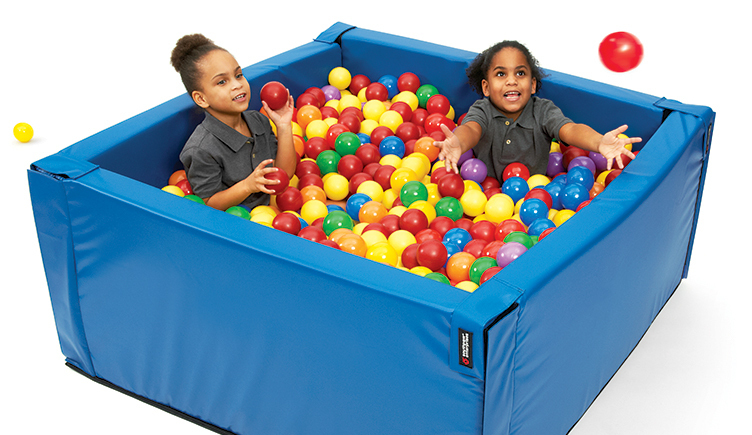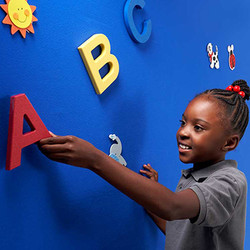In honor of Sensory Processing Disorder Awareness Month, which is celebrated in October, I was inspired to reflect on the timeline of Dr Ayres’ pioneering work in Sensory Integration. I am overwhelmed with feelings of gratitude and awe for the amazing and ongoing work being done to establish ASI as an evidence-based practice and for the leaders of this mission, whom I regard as heroes in the great field of Occupational Therapy.
As a professional, I feel truly fortunate to be a part of this field, and I continue to enjoy reading and learning about everything related to the evolution of the wonderful world of SI. In keeping, I enrolled in the CLASI certificate program course, Planning and Designing Ayres Sensory Integration (ASI) Intervention Space, and I was reminded of when I first started out as a practice owner.
I was all set with committed clients, a business plan, and all the licenses and insurance I needed to practice independently. The next challenge was to find the right space and furnish it with the right equipment, all while staying within my budget. How would I turn a space that was designed for seated office work into a warm and inviting intervention space that would support the use of the Sensory Integration Framework?
This depended primarily on my ability as a therapist and on the equipment choices I would make. Shopping for OT equipment, for me, is analogous to someone with an insatiable sweet tooth standing in the middle of a candy shop, and my budget was somewhat unforgiving during those earlier times. To narrow down my choices, I focused on the primary goal of ASI: facilitating the development of foundational sensory-motor functions needed for successful participation in daily living activities. How do you do that? By considering each sensory system and understanding how each piece of equipment can be used to address multiple systems (ideally at once).
Suspension is a core element of ASI—I decided to start with the Custom Support Structure and work from there. Every swing has at least one great opportunity (and almost always many more!) to offer. If you are constrained by space and/or budget, remember your foundations—the vestibular, proprioceptive, tactile systems and how you will address all planes of movement. For example, Dr Ayres, in her historic Fidelity Measurement video, explains how the Bolster Swing provides opportunities for intensive vestibular, proprioceptive AND tactile input through various therapist-led activities. (That’s a trifecta!) As I expanded, I developed a list of essential swings: Bolster, Platform, Tube (2), Glider, Trapeze, Moon, Frog and the Rainbow Acrobat swings.
The ASI Intervention space should encourage a child to actively explore their surroundings and allow the therapist to create opportunities to create “just right” motor learning and problem-solving opportunities that are SAFE and tailored to the unique and individualized needs of each child.
You too can achieve a well-equipped ASI Intervention Space with Dr Ayres’ recipe of “a lot of imagination and a little bit of equipment”!
For more information on designing an ASI Intervention space and a list of essential equipment items, contact HeatherM@southpaw.com.
Heather Majtyka, MOT OTR/L, is a practicing Occupational Therapist who believes that every child has limitless potential. A graduate of Temple University’s MOT program, Heather was inspired to become an OT when her son was diagnosed with autism in 2003. She began her career as a member of the Pediatric Rehabilitation team at a large hospital, where she supported infants in a Level III NICU, provided Early Intervention support in homes, and worked with the School-Aged Outpatient Population. In 2013, Heather founded her own pediatric practice and expanded from the Philadelphia area to Franklin, Tennessee. As a long-time customer, Heather is proud to represent Southpaw Enterprises as the premier, USA based manufacturer of Sensory Integration and Multisensory Environmental Solutions.
References
Frequently Asked Questions About the NCAEP Report | NCAEP | The National Clearinghouse on Autism Evidence and Practice. (n.d.). Retrieved October 20, 2022, from https://ncaep.fpg.unc.edu/frequently-asked-questions-about-ncaep-report
Parham, L. D., Roley, S. S., May-Benson, T. A., Koomar, J., Brett-Green, B., Burke, J. P., Cohn, E. S., Mailloux, Z., Miller, L. J., & Schaaf, R. C. (2011, March 1). Development of a Fidelity Measure for Research on the Effectiveness of the Ayres Sensory Integration® Intervention. The American Journal of Occupational Therapy,65(2), 133–142.https://doi.org/10.5014/ajot.2011.000745
- Schaaf, R. M. Z. C. (2015, April 13). Clinician’s Guide for Implementing Ayres Sensory Integration: Promoting Participation for Children With Autism. AOTA Press.
Southpaw Enterprises. (n.d.). Retrieved October 21, 2022, from https://www.southpaw.com/



